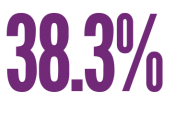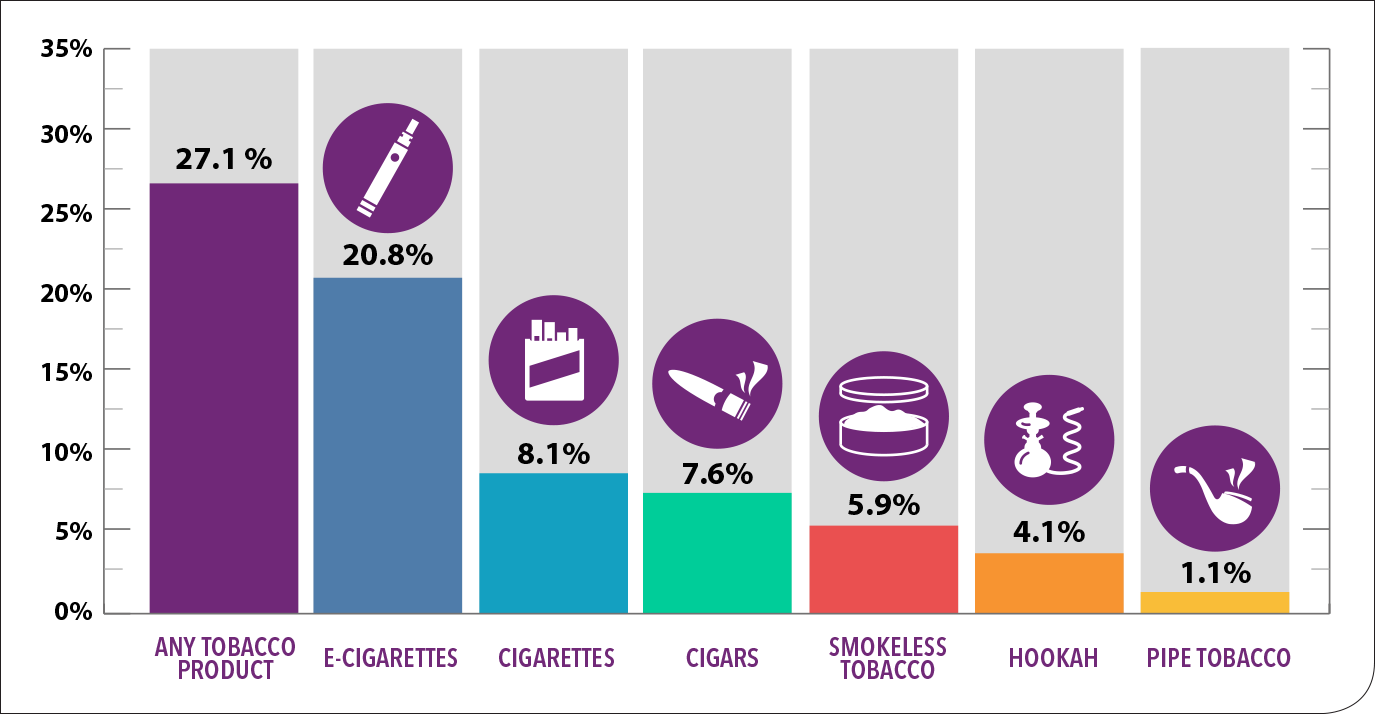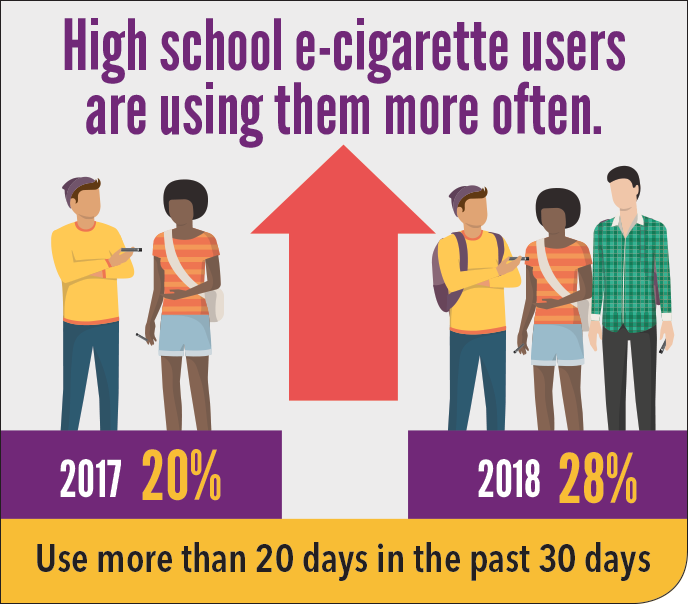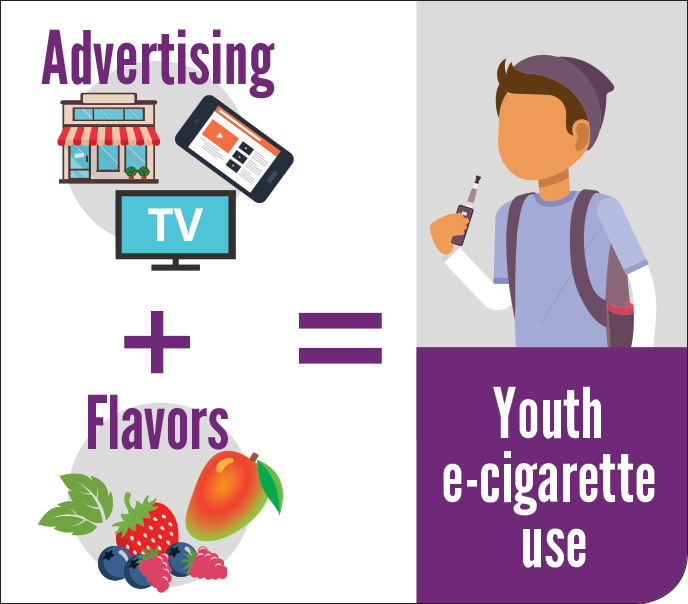Tobacco Use By Youth Is Rising


There were 1.5 million more current youth e-cigarette users in 2018 than 2017.

4.9 million youth were current tobacco product users in 2018.

Use of any tobacco product grew by 38.3% among high school students (2017-2018).
Overview
Tobacco product use among US youth is increasing. More than 1 in 4 high school students and about 1 in 14 middle school students in 2018 had used a tobacco product in the past 30 days. This was a considerable increase from 2017, which was driven by an increase in e-cigarette use. E-cigarette use increased from 11.7% to 20.8% among high school students and from 3.3% to 4.9% among middle school students from 2017 to 2018. No change was found in the use of other tobacco products, including cigarettes, during this time.
Among youth:
- E-cigarettes are still the most commonly used tobacco product, ahead of cigarettes, cigars, smokeless tobacco, hookah, and pipes.
- E-cigarettes are the most commonly used product in combination with other tobacco products.
- E-cigarette use is highest for boys, whites, and high school students.
Tobacco product use among high school students—2018

SOURCE: Tobacco Product Use Among Middle and High School Students — United States, 2011-2018.
Morbidity and Mortality Weekly Report (MMWR), February 2019.
Nearly all tobacco product use begins in adolescence.
Any tobacco product use among youth is unsafe, including e-cigarettes.
- Cigarette smoke contains over 7,000 chemicals, including about 70 that cause cancer.
- Nearly all tobacco products, including e-cigarettes, contain nicotine.
- Youth nicotine use can lead to addiction and can harm the developing brain, impacting learning, memory, and attention.
Parents and Educators Can:
- Set a positive example by not using tobacco products themselves.
- Learn about different types and risks of tobacco products, including e-cigarettes.
Healthcare Providers Can:
- Ask specifically about e-cigarettes when screening for tobacco product use.
- Warn youth about the risks of all tobacco product use, including e-cigarettes.
Schools Can:
- Adopt and enforce tobacco-free campus policies that include e-cigarettes.
- Reject tobacco industry-sponsored prevention programs, which are proven not to work.
States and Communities Can:
- Prohibit smoking and e-cigarette use inside workplaces and public places.
- Increase the minimum age of sale of tobacco products to 21 years.
- Prohibit the sale of flavored tobacco products.

JUUL is now the most commonly sold e-cigarette in the US.
- JUUL is an e-cigarette shaped like a USB flash drive and is easy to conceal.
- JUUL uses liquid nicotine refills called “pods,” which contain at least as much nicotine as a pack of cigarettes and are available in flavors that appeal to youth.
- JUUL devices are being used by youth in schools, including inside bathrooms and classrooms.
Related Pages and Resources
- CDC Vital Signs – Tobacco Product Use by Youth [PODCAST – 1:15 seconds]
- Tobacco Product Use by Youth [PSA – 60 seconds]
- Vital Signs: Tobacco Product Use Among Middle and High School Students — United States, 2011–2018, Morbidity and Mortality Weekly Report (MMWR)
- Vital Signs: Press Release – Progress erased: youth tobacco use increased during 2017-2018 [Spanish]
- Youth and Tobacco Use
- Know The Risks: E-cigarettes & Young People
- Quick Facts on the Risks of E-cigarettes for Kids, Teens, and Young Adults
- E-cigarette Fact Sheet: Parents, Educators and Health Care Providers
- E-cigarette Infographic: Teachers and Parents
- 2016 Surgeon General’s Report: E-Cigarette Use Among Youth and Young Adults
- 2014 Surgeon General’s Report: The Health Consequences of Smoking—50 Years of Progress
- Preventing Tobacco Use Among Youth and Young Adults: A Report of the Surgeon General, 2012
For More Information
1-800-CDC-INFO (232-4636)
TTY: 1-888-232-6348
Web: www.cdc.gov
Centers for Disease Control and Prevention
1600 Clifton Road NE
Atlanta, GA 30333
Publication date: February 11, 2019

